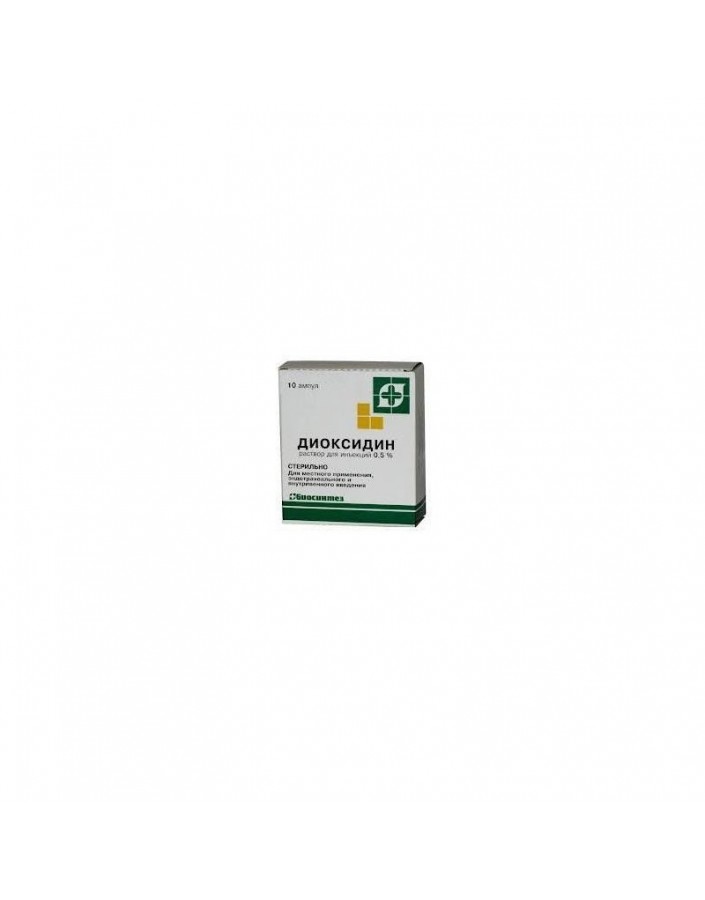




Security policy (edit with Customer reassurance module)

Delivery policy (edit with Customer reassurance module)

Return policy (edit with Customer reassurance module)
| pharmachologic effect
Antibacterial bactericidal drug of a wide spectrum of action. Active against Proteus vulgaris, Pseudomonas aeruginosa, Friedlander sticks, Escherichia coli, Shigella dysenteria, Shigella flexneri, Shigella boydii., Shigella sonnei, Salmonella spp., Staphylococcus spp., Streptococcus sop. It acts on bacteria strains resistant to other antibacterial agents, including antibiotics. It has no irritating effect. Perhaps the development of drug resistance of bacteria. With the on / in the introduction is characterized by low therapeutic latitude, and therefore requires strict adherence to the recommended doses. Treatment of burns and purulent-necrotic wounds contributes to a more rapid cleansing of the wound surface, stimulates reparative regeneration and marginal epithelization, and favorably affects the course of the wound process. Experimental studies have demonstrated the presence of teratogenic, embryotoxic and mutagenic effects. Pharmacokinetics When applied topically, it is partially absorbed from the wound or burn surface, excreted by the kidneys. After intravenous administration, the therapeutic concentration in the blood is maintained for 4–6 hours. It penetrates well into all organs and tissues well and is rapidly excreted by the kidneys. TCmax in the blood - 1-2 hours after a single injection, with repeated injections, does not accumulate. IndicationsOutwardly, local - wound and burn infection (superficial and deep purulent wounds of various localization, nonhealing wounds and trophic ulcers, phlegmon of soft tissues, infected burns; purulent wounds in osteomyelitis); pustular skin diseases. Intrafolio - purulent processes in the chest and abdominal cavity: purulent pleurisy, empyema, lung abscess, peritonitis; cystitis, wounds with the presence of deep purulent cavities (soft tissue abscesses, cellulitis cellulitis, postoperative wounds of the urinary and biliary tract, purulent mastitis). In / in - septic conditions (including in patients with burn disease), purulent meningitis, purulent-inflammatory processes with symptoms of generalization. Prevention of infectious complications after bladder catheterization. ContraindicationsHypersensitivity, adrenal insufficiency (including in history), pregnancy, lactation. With care - renal failure. Dosing regimen Outwardly, locally. Ointment - a thin layer on the affected area 1 time per day; on the wounds impose wipes moistened with a solution. Deep wounds are padded or irrigated with a 0.5% solution. In the form of an aerosol: 1.5–3 g of foam (when pressed until it stops at the nozzle for 1-2 sec, 15-30 ml comes out of the balloon) necrotic masses, daily or every other day, depending on the condition of the burn wound and the course of the wound process. The maximum daily dose - 2.5 g. Duration of treatment - 3 weeks. Intravascular. In the cavity, the solution is injected through a drainage tube, catheter or syringe, 10-50 ml of 1% solution. In / in the drip. In severe septic conditions, inject 0.5% solution for injection, prediluting in 5% dextrose solution or 0.9% sodium chloride solution to a concentration of 0.1-0.2%. The highest single dose - 300 mg daily - 600 mg. Adverse effectsAllergic reactions. After i.v. and intracavitary injection, headache, chills, hyperthermia, nausea, vomiting, diarrhea, jerky muscles. Local reactions: near-edge dermatitis. Special notesWith CRF, the dose is reduced. Assign only with the ineffectiveness of other antimicrobial drugs. |